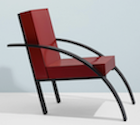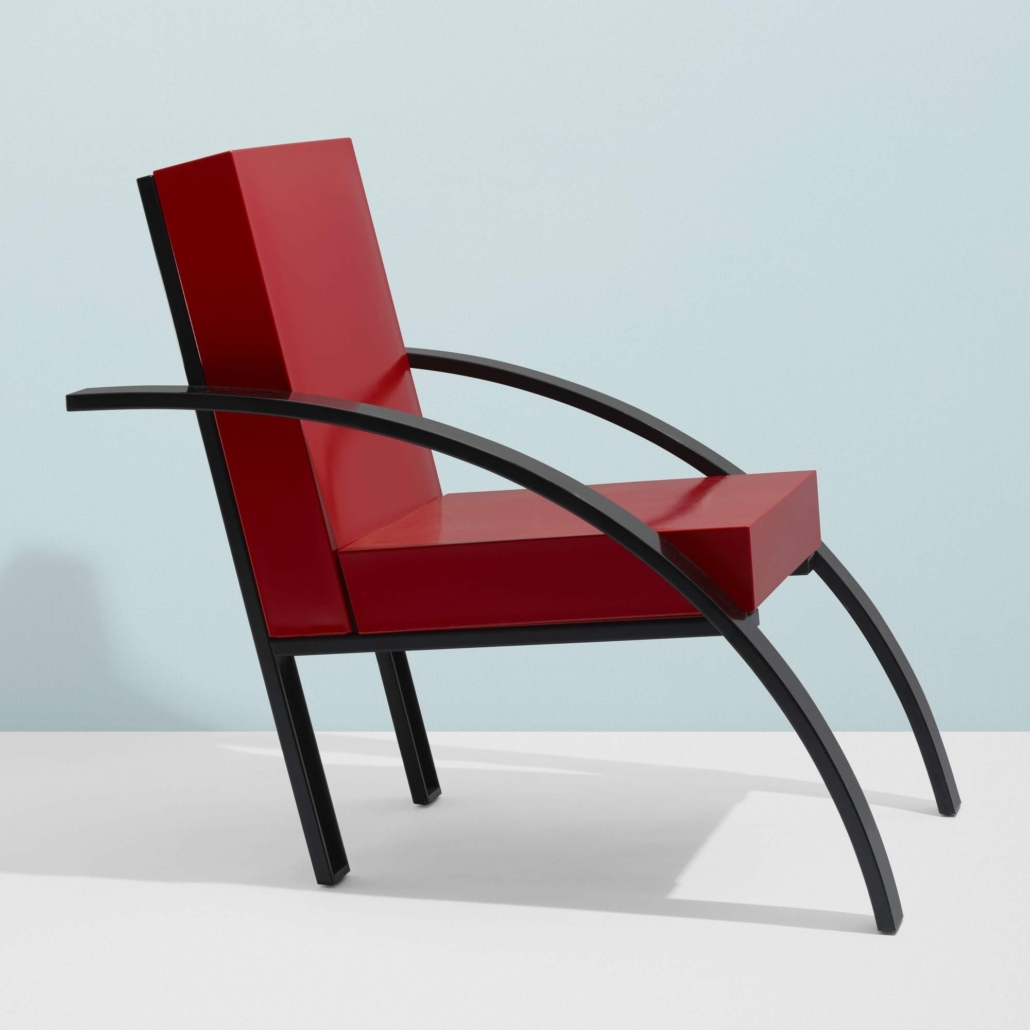
NEW YORK — A leader of the postmodern movement, Italian architect and industrial designer Aldo Rossi (1931–1997) was the first Italian to receive the Pritzker Prize for architecture and gained a reputation for well-constructed furniture with playful designs that are rooted in geometry and embrace the essence of form and color.
One of his best known chair designs is the Parigi (Italian for Paris) chair for Unifor, which is celebrated for its striking profile. Its foam seat and back with enameled-steel frames look good from literally every angle, making this chair one of the standouts of 1980s Italian design.
“In terms of product design, the same distinctive independence of Rossi’s buildings is very much reflected in the micro-architectures of the products he designed,” says Casati Gallery on its website, while also noting that Rossi’s Parigi chair consists of an exposed black aluminum frame with two curvilinear aluminum sections serving as the armrests and front legs.
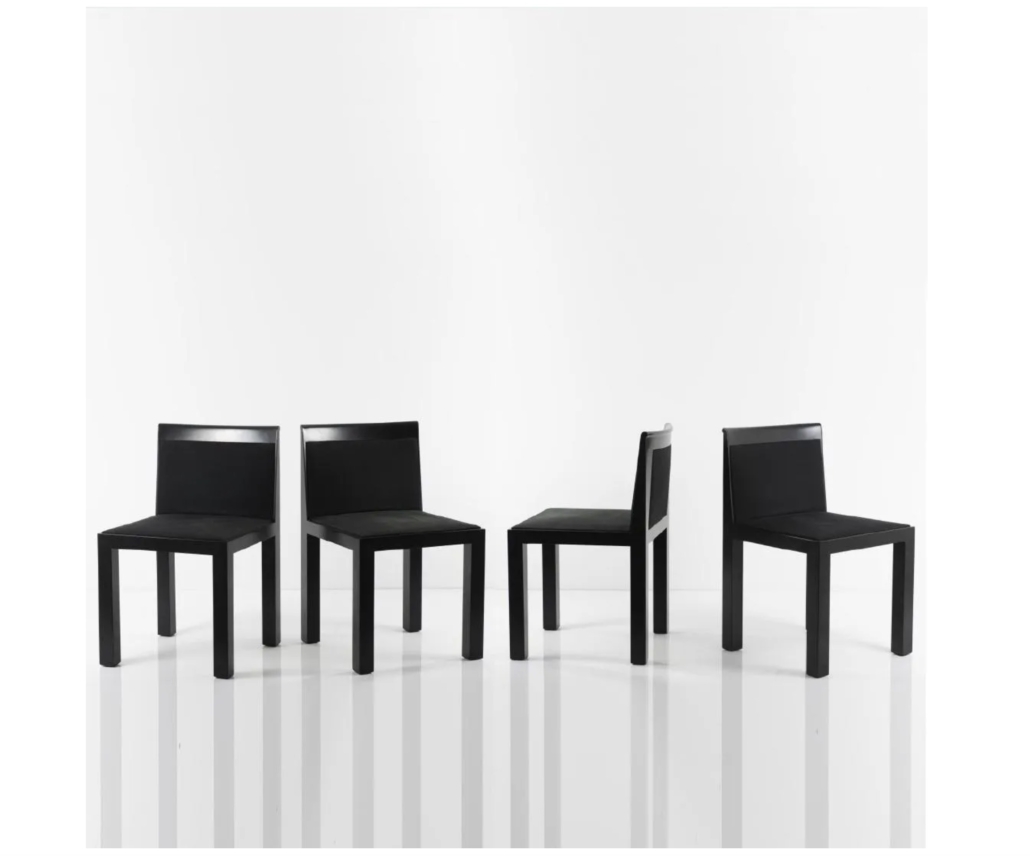
Several of Rossi’s most iconic designs were created for the Molteni & C. firm, which still produces several of his furnishings today. Among his other memorable chair designs are Teatro, an upholstered wooden chair that Rossi and Luca Meda, then art director for Molteni and C., created in 1983 for the Carlo Felice theater in Genova. It has since been reissued by furniture makers. In 1987, Rossi also debuted the well-regarded wooden Milano chair.
Rossi was noted for his talent for seeing the big picture without shortchanging small details. A telling anecdote about the Italian designer claims that a walk past a building with many windows inspired him to create a glass-fronted bookcase that is a building in its own right, containing objects, clothing and memories. Named Piroscafo (steamship), Rossi collaborated with Luca Meda to create the bookcase in 1991 for Molteni & C. The piece also takes its inspiration from steamships, and its design pays homage to the houses on rocky seashores. It was recently reissued by Molteni in honor of its 30th anniversary.
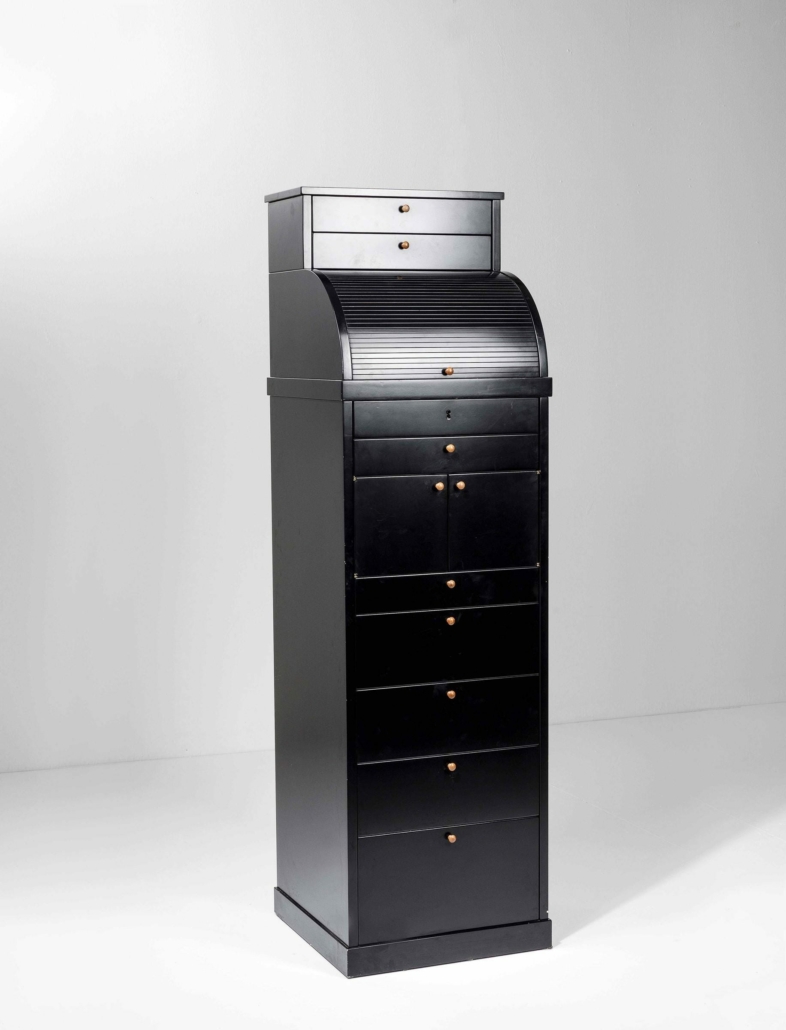
Another winning example of Rossi furniture is the Carteggio desk/secretaire that he designed for Molteni in 1987. The wooden writing desk is a tall piece, almost like a cabinet, and features drawers and a roll-top section.
Colorfully-striped beach cabanas were the inspiration for Rossi’s Cabina Dell’Elba wardrobe, which he created circa 1980-82. According to the website of the designer’s foundation, the Fondazione Aldo Rossi, he often visited the Mediterranean island of Elba and sketched the cabanas and cabins there. “So I met thousands of cabins, from the beaches of the Mediterranean, to California, to Argentina,” he said, likening each cabin to a small house or the idea of a house.
Besides furniture, Rossi also dreamed up a series of coffee makers, espresso makers, and other products in the 1980s for Alessi. Chief among them are the La Cupola coffee maker and Il Conico tea kettle, both released in 1988; the Prometeo floor lamp and table lamp (1988-91) and the stainless steel Momento wall clock in 1993.
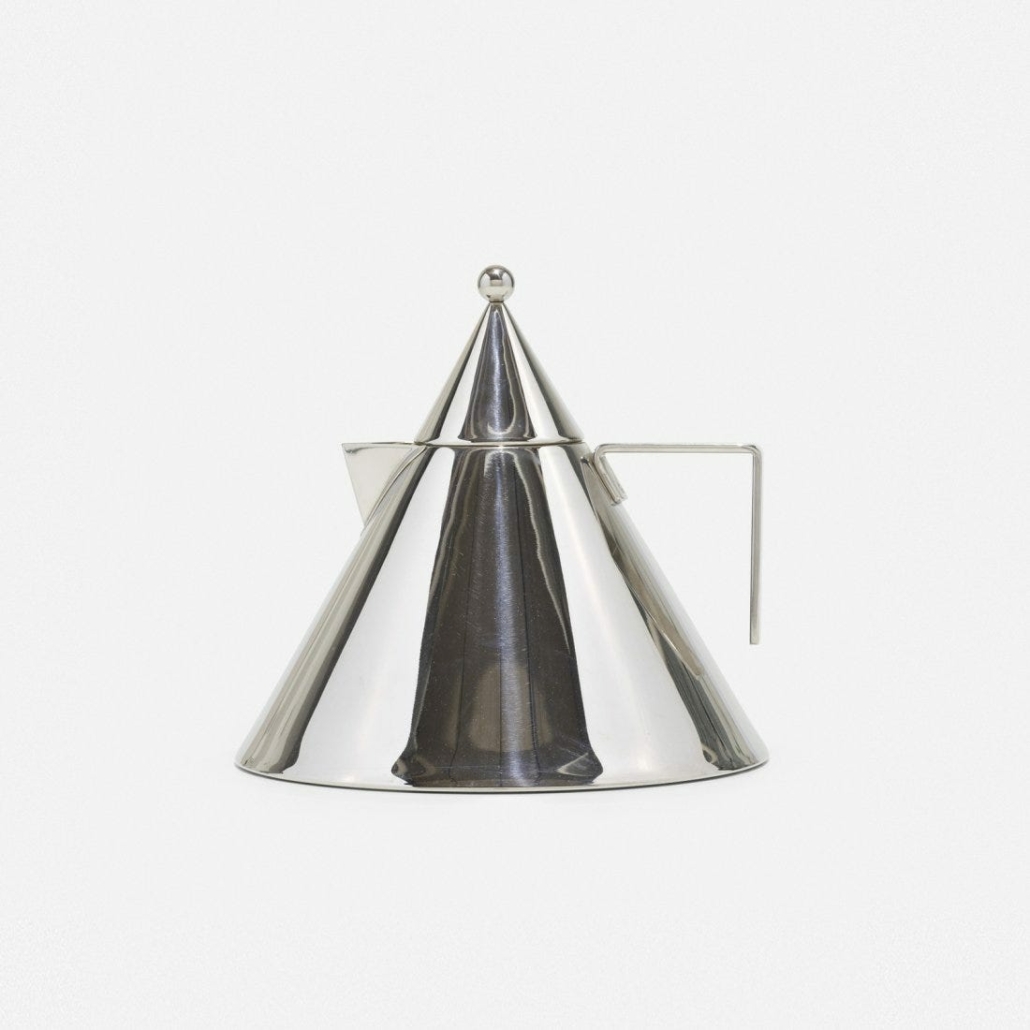
Of Il Conico, Alessi notes on its website that the item represents the transformation of Rossi’s geometric designs into a kitchen object that in turn became a design icon. “In Rossi’s designs there is an evident relationship (often ironic, always clarifying) between the design object and built architecture,” Alessi writes.
Rossi unveiled a four-piece Piazza coffee and tea service in 1984 that included a coffee pot, teapot, creamer, sugar, and presentation box, made from sterling silver, enamel, patinated copper, brass and glass. An example of the service sold for $8,000 plus the buyer’s premium in May 2019 at Rago Arts and Auction Center. The Tea & Coffee Piazza debuted in 1983 in hand-worked silver in 99 pieces and was the first collaboration between Rossi and Alberto Alessi, kicking off a long and fruitful partnership.
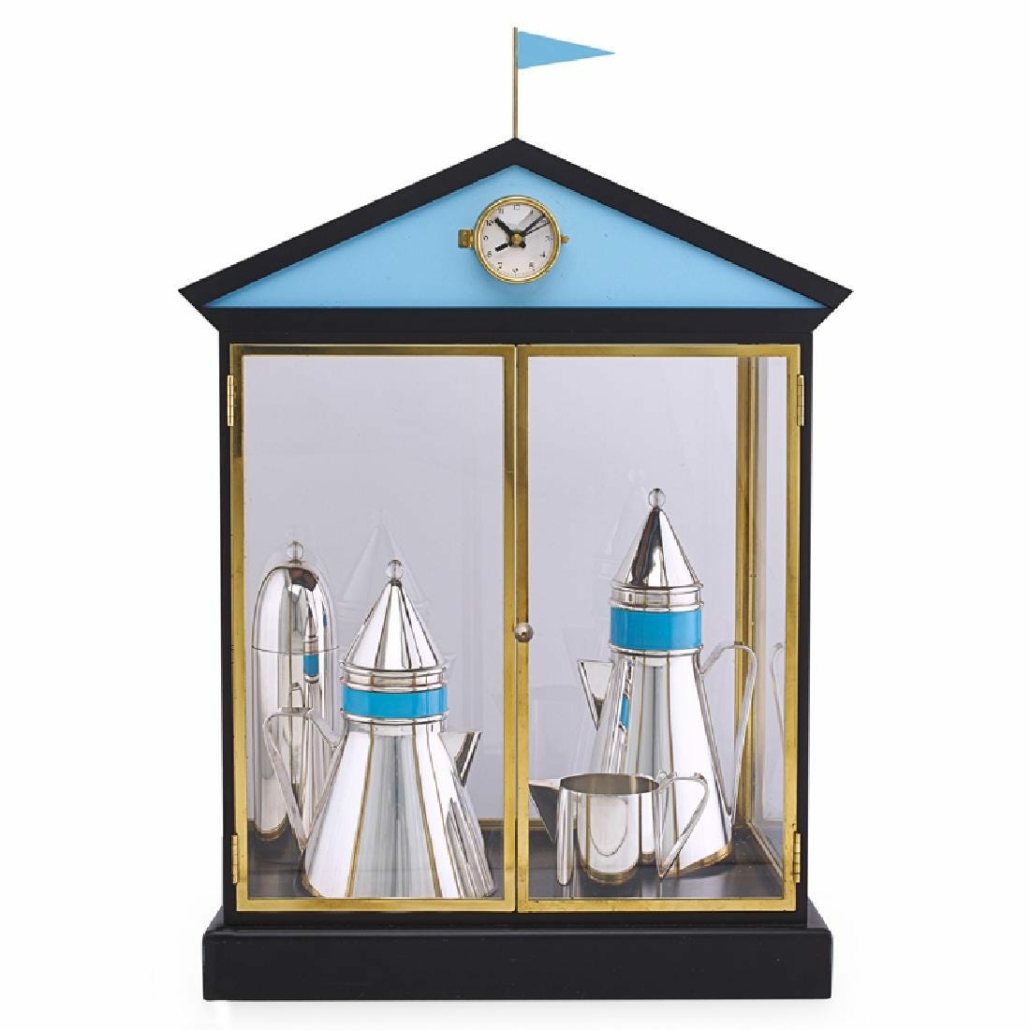
The designer’s works appear in several notable museum collections, including a 1989 Parigi armchair held by the Museum of Modern Art. That particular example is fashioned from painted steel and bright red polyurethane foam.
Almost 25 years after his death, Aldo Rossi’s legacy survives and thrives not just in his native Italy but the world over, providing rich inspiration for the next generation of designers and architects.
# # #


